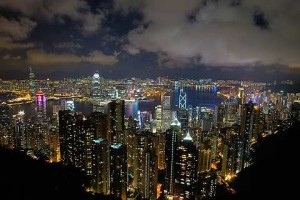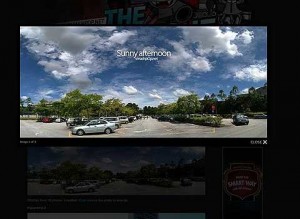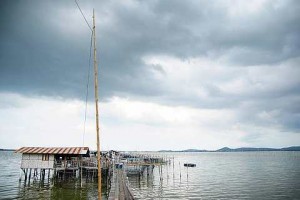By JASON GOH
SOMETIMES, while travelling, you will come to a place with a breathtaking scene. Whether it’s a skyscraper, or rolling hills and valley, or just a busy street with colourful billboards and lights, these sceneries make for perfect pictures. And what better way to show them off than to use them in your blog. Shooting sceneries is quite common among photography buffs. In fact, almost anyone with a camera would have taken at least a handful of scenery shots in their lives. How do you determine whether a scenery is worth taking a shot of or not? Although these kinds of pictures are quite subjective, you would still need to have a keen eye for landscape photography. For landscapes that involve hills and trees, you should probably figure out first if they look unique or have a certain shape to them. If the trees and hills stretch across the whole scenery and there is nothing much to see beyond that, then the picture could turn out really boring.A view of the city would look a lot better at night, when the bright lights are on.
Look for interesting objects within the scenery to add a bit of detail to the shot. However, if the sky is very bright and there are no clouds then the picture may not look nice because the objects might get washed out.
The beach and the ocean make good scenic pictures, too. Try and get a shot of birds flying across the sky, with the sea anchoring the bottom part of your picture. If you’re taking a shot of the beach, some images of coconut trees within the frame of the picture would make things look more interesting. Basically, you need to have more than just one thing to look at in your landscape picture to make it worthwhile.
Pictures of sunrise or sunset are great as they bring different colours into the scene and exaggerate the contrast of the clouds and other objects that you can get in the photo.
Another type of scenery that would make a good picture is skyscrapers. Pictures of buildings are nice when it is shot with the clear blue skies or puffy white clouds in the background. Always make sure you capture the base of the buildings as well. A photo with buildings cut halfway at the top is a big no-no. One needs to know where the buildings are placed.
If one of the buildings is of a different size, then the picture will look even better because at least there is an object to focus on.
To capture these sceneries, you might need to have a wide-angle lens on your dSLR. Anything with 17mm or wider is good enough but an 11mm lens is better.
In case if you don’t own any of these lenses, a kit lens would do, too. A kit lens usually ranges from 18mm to 55mm. Just make sure you set it to the widest and go as far away as you can until you get the scene you want in the photo. I usually set my aperture to f5.6 when it comes to sceneries because I want to make sure everything is sharp and in focused from left to right.
Bigger apertures might cause the subjects to be blur at certain parts depending on the distance between you and the subject but just to make sure it’s sharp, set it to f5.6 or smaller.
Digital cameras can take good scenery pictures, too! There are many cameras that come with wider angles. Get one of those if your passion is to take sceneries but don’t want to spend too much on a camera. Remember to go as further away as possible so you can capture everything in the photo.
Some compact cameras have a feature called “panorama”. This eases the process of framing landscapes with a not-so-wide lens. All you have to do is just sweep across the scene with your camera. A horizontally long photo will be produced.
Speaking of panoramas, even smart phones in the market now have these features. They either come built in or in the form of apps. Some need users to take photos and match them manually. Some are as simple as sweeping the phone across the scene.
Once you have taken all these nice shots of sceneries and want to share them on your blog, upload the pictures to a photo hosting website like Flickr. This way, you can keep the size of the picture and not have to shrink them down.
Link the picture from the thumbnail or add a smaller photo on your blog. This allows the viewer to open a new window with the large photo displayed.
If you know how to edit your blog template, or are able to insert codes into the backend, you can try installing a JavaScript viewer that allows the smaller photo to be clicked and opened up an overlay on your blog displaying the larger version.
One of the most popular JavaScript viewers is called “Lightbox”. It’s simple to implement and looks really impressive with transitions and slideshow options.
Hopefully these tips are able to help you in taking landscape/sceneries when you go on your travels, or are simply at a place where the scenery is just beautiful. Take lots of pictures of the same scene because then all you need to do is pick the best ones later when you’re uploading them.
Check out Jason Goh’s blog at http://smashpop.net.





Tell us what you think!